UKFT Report on Paris Women’s Fashion Week (March 2025)
17/03/2025
In March 2025, UKFT accompanied approximately 80 British brands and designers exhibiting at major tradeshows such as Tranoi, Première Classe, Sphere, Matter & Shape and London Showrooms, as well as at multi-brand showrooms including AMF Paris, Arddun, Claret Showroom, Emma Jones Consultancy, The Alphabet, Awaykin, Tora Tora, Polly King & Co, Rainbowwave and more.
Paris Women’s Fashion Week remains the largest and most important of the international womenswear wholesale selling season events. The week is universally accepted as the most international of the fashion weeks and the key barometer of the mood of international retailers for designer womenswear.
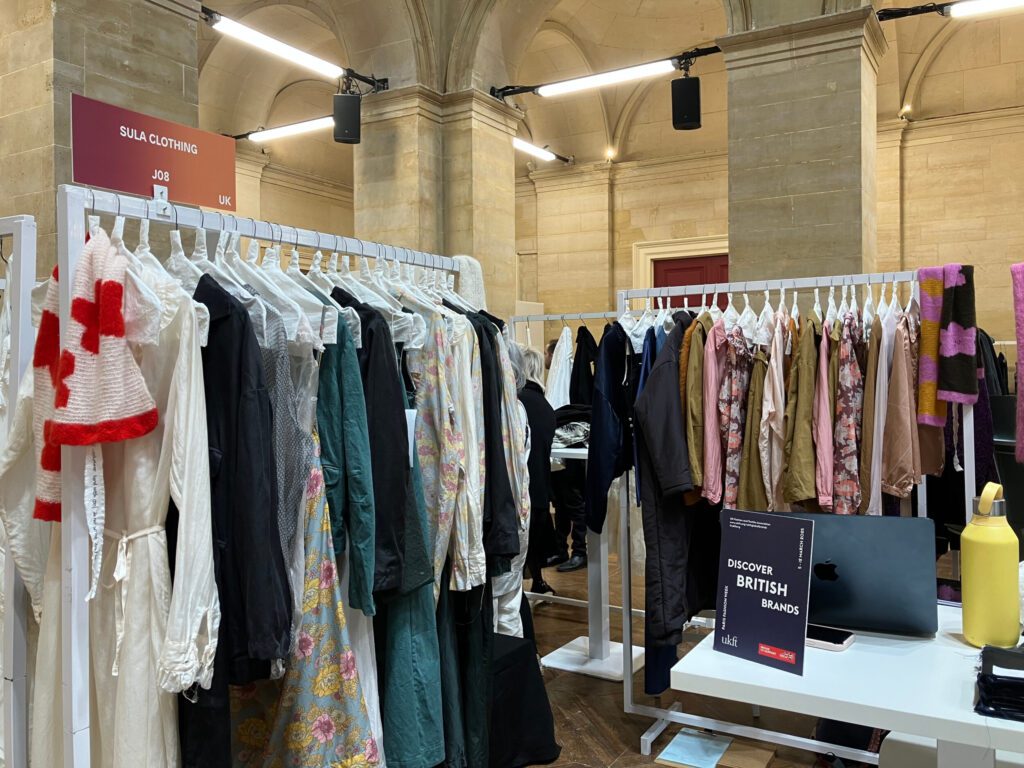 Image: Sula Clothing at Tranoï.
Image: Sula Clothing at Tranoï.
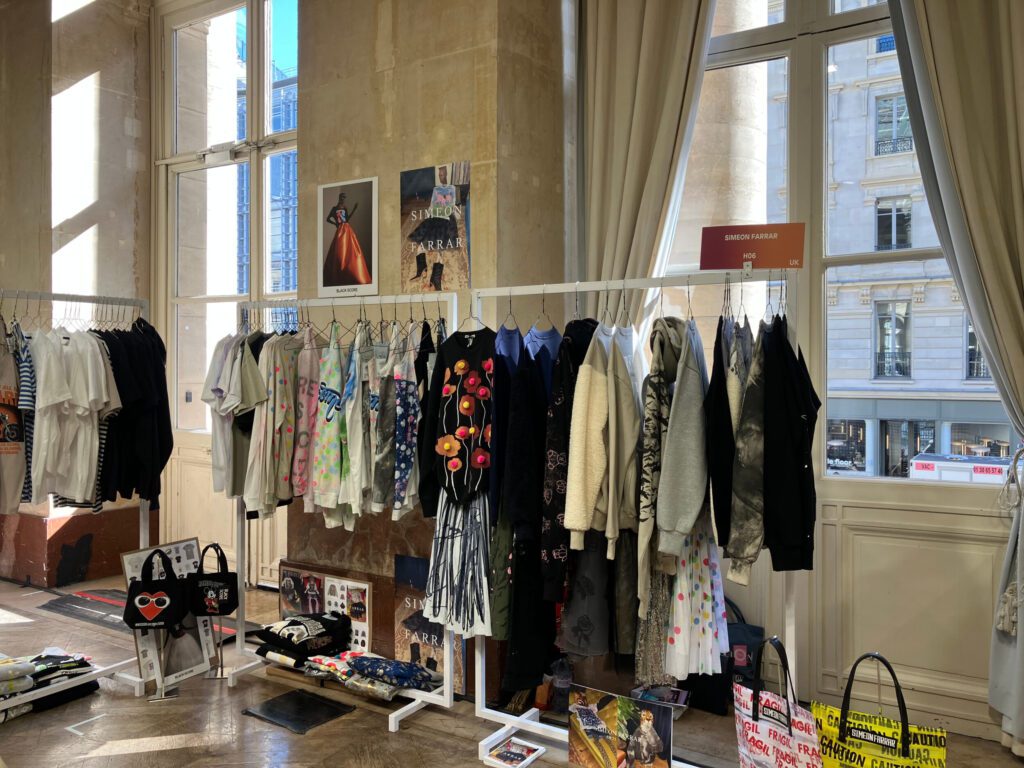 Image: Simeon Farrar at Tranoï.
Image: Simeon Farrar at Tranoï.
Over the past few years buyers increasingly have targeted their attention and open to buy (OTB) budgets on Paris and Milan, mostly eschewing other fashion weeks and events. Many stores have reduced their sales team numbers and the length of their stay in Paris, making it more challenging for buyers to see all the key collections. Thankfully, this season, there was a lot of early spring sunshine which lifted everyone’s mood and made it easier for buyers to reach their appointments in the time available.
The March fashion week was quieter than usual, though it gained momentum in the second half. Several factors contributed to this:
- March shows are typically smaller than September ones due to the absence of swimwear, and September shows attract more US buyers seeking holiday/resort and cruise wear.
- Global tensions and rising protectionism, particularly in the US, are impacting business.
- Many buyers had already spent a significant portion of their buying budgets at January pre-collection shows, so some skipped Paris in March.
- The threat of US tariffs affected global markets, including US and Canadian buyers. Brexit-related issues also hurt UK-EU sales.
- While Japanese and Asian buyers were present, Japanese buyers were cautious due to the weak yen and Chinese buyers were scarce.
- US and Canadian department stores, like Saks and Neiman Marcus, are restructuring, impacting the global fashion supply chain. Nordstrom is said to be shifting to marketplace contracts, which could affect smaller brands needing secure payment terms.
- Disruptions in Paris were caused by an unexploded WW2 bomb found on Friday, affecting transportation.
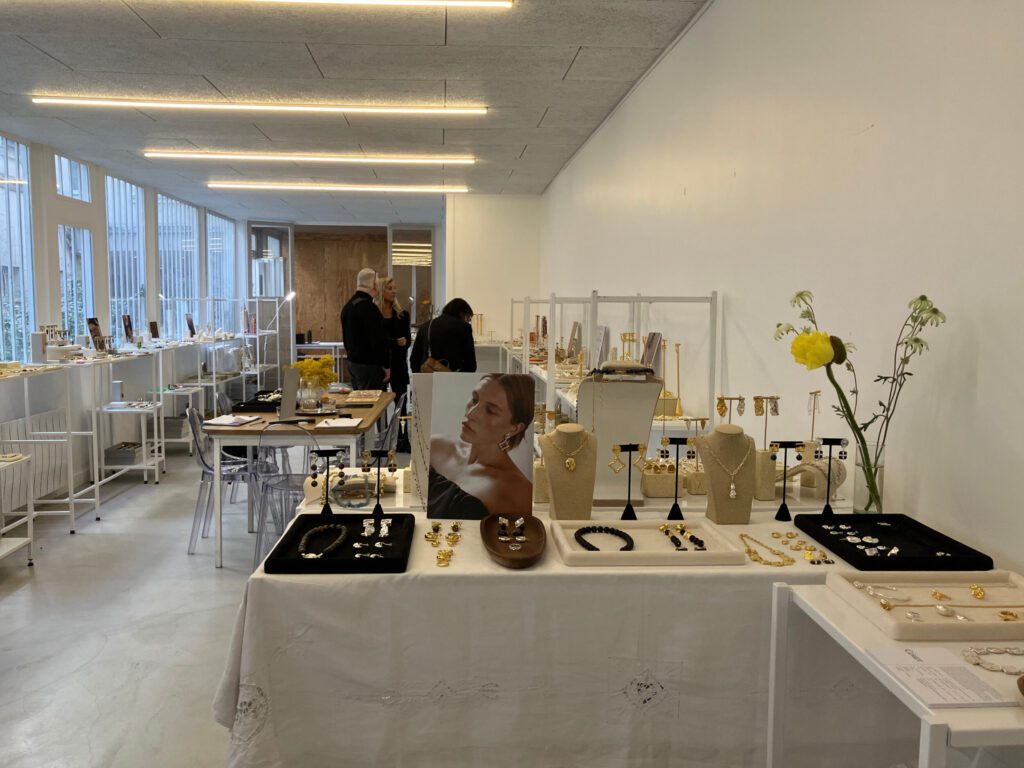 Image: Margaret Howell.
Image: Margaret Howell.
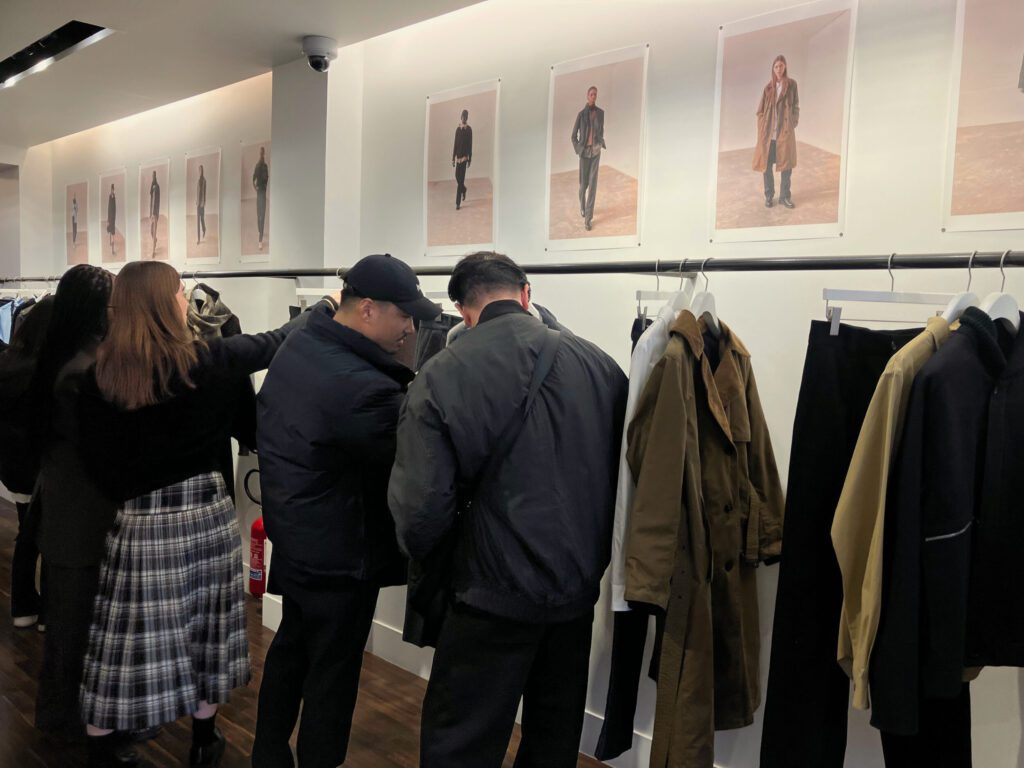 Image: Césart by Rejina Pyo.
Image: Césart by Rejina Pyo.
There were many conversations leading up to the show about the EU’s new GPSR requirement and the implications for UK businesses. Some companies were also experiencing difficulty carrying samples into the EU as they had not previously been challenged for not using an ATA Carnet. It was noticeable that French Customs were at Paris Nord station and in some cases were challenging people with large suitcases. UKFT has always suspected that the EU would start to monitor hand-carried goods into the country more carefully in 2025/6 and that GPSR labelling might potentially be an issue at the border. Jewellery companies have already learned to their cost that France (like Italy, Spain and most others) does not accept the UK hallmark and has its own requirements for precious metals and stones.
The tradeshows in Paris
Tranoi featured four UK exhibitors at Palais Brongniart for a three-day show, with a noticeable presence of buyers, particularly on the first day.
Premiere Classe returned to the Tuileries Gardens alongside a new Gallery-style discovery event titled Matter & Shape, which welcomed UK exhibitors for the first time including Abid Javed, Alighieri, Kiko Kostadinov and Oyuna. Premiere Classe was generally busy on the weekend and the Monday although there was not the usual crush of buyers which the exhibitors had come to expect on the Sunday. Matter & Shape was busy on all four days of the show but it is a contact-building event rather than an order-writing show.
Overall, the multibrand showrooms were well attended although Paris felt quieter than in previous seasons for the reasons given above.
The showrooms in Paris
The British Fashion Council’s LONDONshowROOMS returned to Paris for the second time since Covid with a group of eight UK designers including SS Daley, Ancuta Sarca and Di Petsa. Rainbowwave was busy with appointments over the weekend and into the week. Polly King reported that she was very happy with attendance and had had a good week. Awaykin was busy consistently as were Arddun and Tora Tora. The Alphabet was slightly smaller than usual and felt the lack of Chinese buyers more than most and the Milanese Collective showroom space CSM appeared quieter than usual when UKFT visited. PaperMacheTiger also looked busy when UKFT visited but some of its traditional brands had placed more business during the pre-collections. Conversely, Nouvelle Box and Pirnia Collections (who do not show at pre-collection time) were busy throughout the week with full appointment books. Emma Jones Consultancy Showroom and its surrounding neighbours, including Stella McCartney, were well attended as could be seen from the patio area in front of the showrooms as buyers basked in the intermittent sunshine.
The UK’s standalone brands all reported good business this season, including Jenny Packham, Rixo, IA London and Sabina Savage. Margaret Howell hosted an in-store reception on Sunday which was very well received – especially as it was on the official PFW catwalk programme.
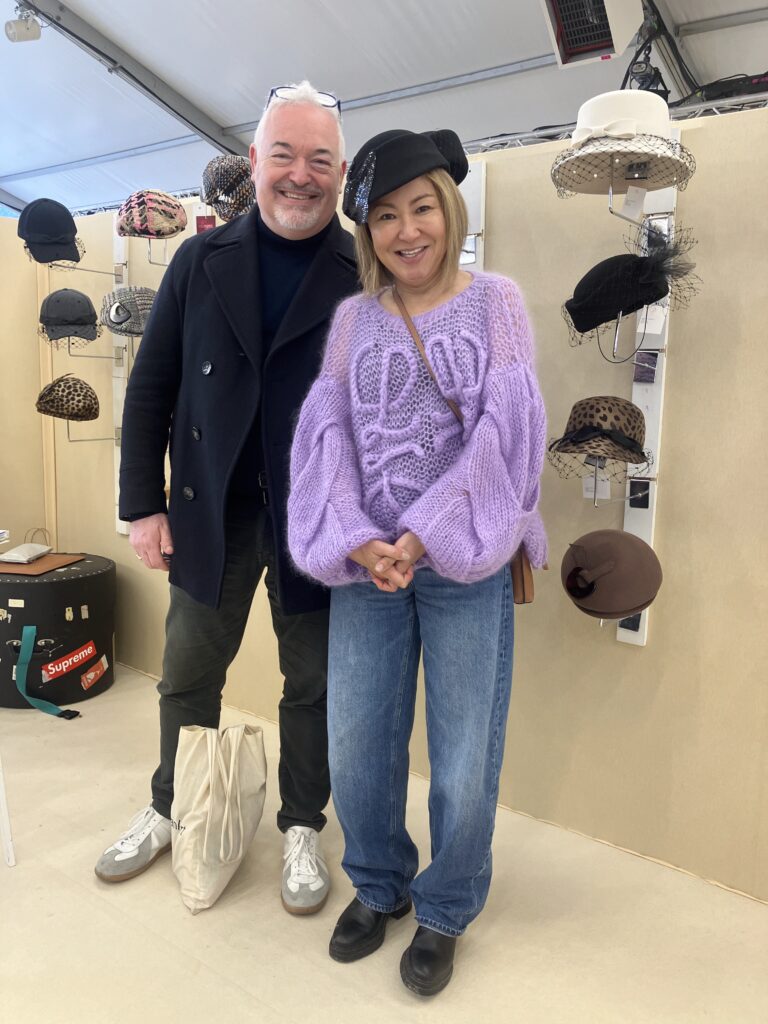 Image: Misa Harada at Première Classe (with Paul Alger, UKFT’s Director of International Business).
Image: Misa Harada at Première Classe (with Paul Alger, UKFT’s Director of International Business).
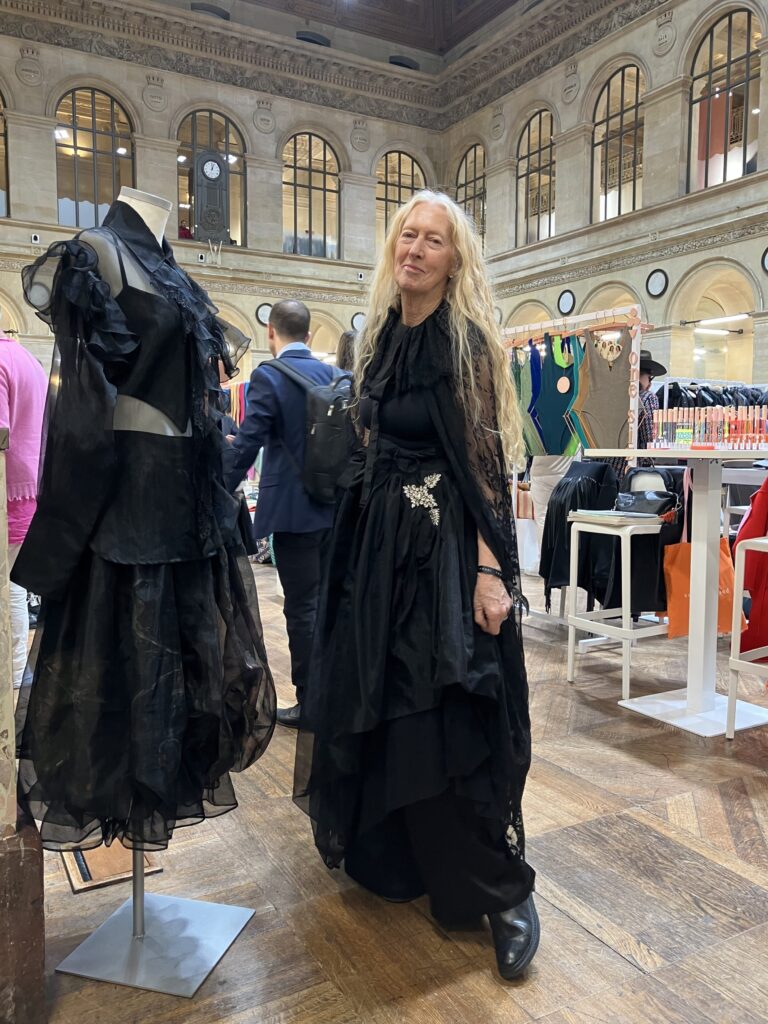 Image: Knight by Nigel Preston & Knight at Tranoï.
Image: Knight by Nigel Preston & Knight at Tranoï.
Looking to the future, it is important to understand that the March Paris showrooms are inevitably impacted by the proximity and growing importance of the January pre-collection shows and showrooms to a far greater extent than in September/October when there is more immediate business to be had. This is especially the case in a volatile market with constant reduction in OTB budgets when times are tough.
More mainstream ready to wear collections can write most of their business during the pre-collections in January and June but the avant-garde Designers and Luxury collections as well as the jewellery and accessories which are generally sold at the same time still need to show in March and October. It remains to be seen whether the multibrand showrooms feel that they can continue to show the same collections in pre-collections and “main” (i.e. four times a year) or whether their formats will have to change. Tranoi and Man/Woman have already had to address this as Tranoi Man no longer exists and Woman Paris now follows a smaller showroom format. Showrooms like Rainbowwave have also differentiated their jewellery collections between the markets. At the same time, Awaykin and others are as busy as ever in both markets with broadly similar ranges. There are plenty of exceptions and the standalone designers can arrange to be in the market whenever their buyers are in town and want to see them. The Discover British Brands map makes this especially easy and cost-effective!
The main topic of conversation at the shows was undoubtedly the volatility of the US markets and where UK companies could look to other markets to reduce the risk to their business of a potential additional tariff hike. Japan, Korea and the Gulf were the main markets for most but there is a growing number of companies looking back to the EU and looking to the UK government to deliver a better UK-EU trading relationship for B2B and B2C in 2026. Many UK brands now have EU companies and ship and invoice from the EU where they now trade seamlessly.
There were also loud calls for government and the Treasury to look again at the important issue of giving the UK high street back VAT refunds (an issue known as VATRes) to attract international consumers to shop in the UK rather than in Paris, Berlin, Madrid and Milan. This is a topic which UKFT is continually raising strongly with Civil Servants, MPs and Ministers.
When wealthy US consumers start to travel abroad (as they will) to shop for luxury goods which are more expensive at home, the UK should be ensuring that they are attracted to the UK rather than anywhere else. Companies were increasingly frustrated with HMG’s failure to address and rectify this issue with some promising to write to their MPs on the issue. There is a very strong feeling that this and the UK’s trading relationship with the EU need to be rectified urgently if the UK’s growth agenda is to have any chance of success.
 Image: Le Monde Béryl at Rainbowwave.
Image: Le Monde Béryl at Rainbowwave.
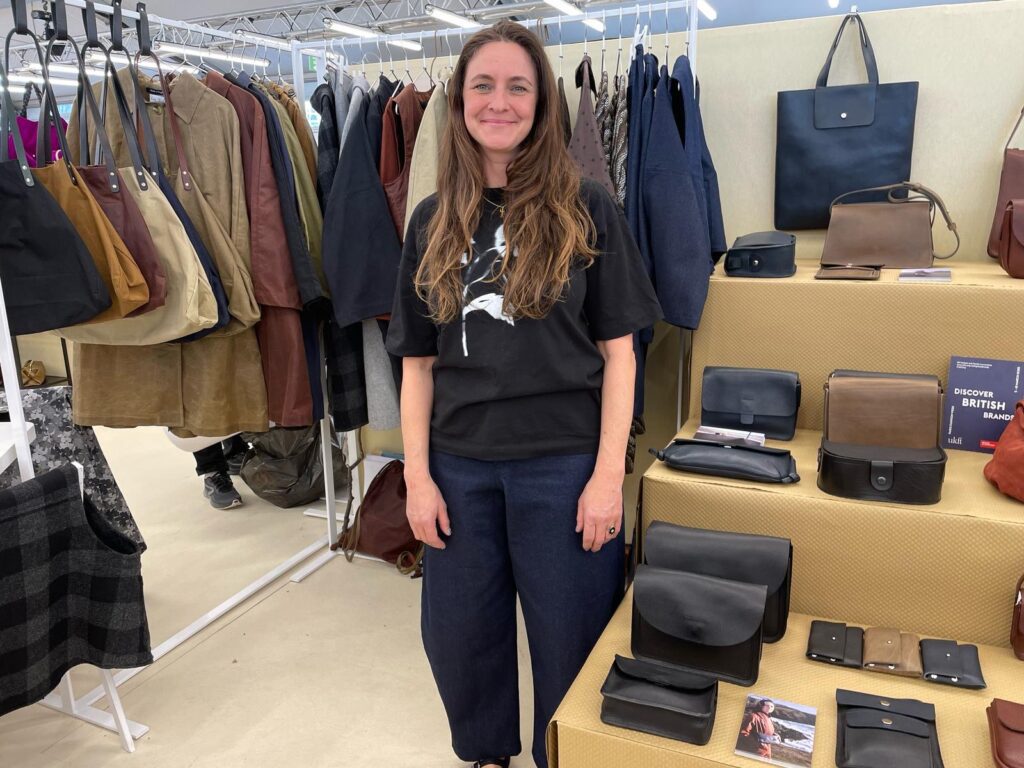
Image: Kate Sheridan at Première Classe.
Paul Alger MBE, international business director at UKFT said: “We have had a positive Paris Fashion Week but it has been undoubtedly affected by global events and a feeling that the US is likely to be an unpredictable business partner for the next three or four years. Conversely, the positive mood music between the UK and the EU has led to an upturn of interest in the UK from the EU, mostly benefitting UK brands which ‘ship and invoice from the EU’. At the same time, we have also seen the UK place good business with the Middle East, Japan and Korea which are less volatile than other parts of the world.”
